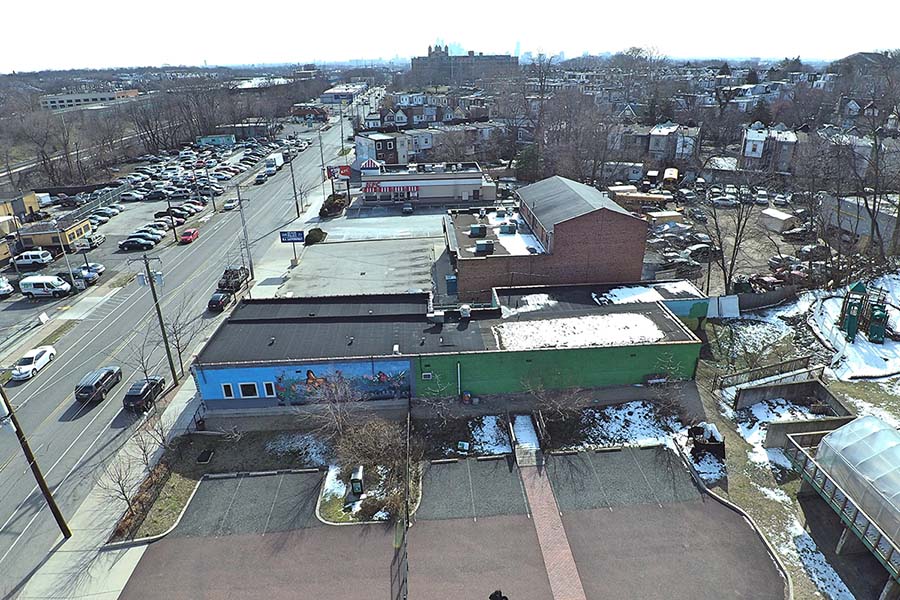Cumulative Impact: Pursuing Environmental Justice in West Philadelphia

Jerome Shabazz has devoted his career to solving environmental challenges that affect public health and safety. Among his many professional roles, he serves as Director of the Overbrook Environmental Education Center. He was a featured speaker at the 2023 Independence Blue Cross (IBX) Health Equity Summit and has been kind enough to write for us on a topic that he is very passionate about.
People interact with chemicals every day — through food, the products we use, or substances in our air, soil, and water. While some of these substances are safe and helpful, others can negatively affect our health in subtle but concerning ways.
For instance, obesogens (o-BEES-o-genz) are endocrine-disrupting chemicals, including xenobiotics (ZEE-no-bi-OT-icz), that appear in everyday items like personal care products, cosmetics, cleaners, toys, kitchen utensils, plastic curtains, tablecloths, furniture, mattresses, and clothing. They can cause obesity in animals and humans.
We need to be more mindful of the substances that surround us, especially when they can pose a very real threat to our safety.
Telling It Like It Is: Some Substances We’re Exposed to Are Poisonous
The Centers for Disease Control and Prevention (CDC) defines poison as “a substance that can cause illness, injury, or death.” The agency notes that poisons can be swallowed, inhaled, or absorbed through the skin.
By that definition, poisons are all around us. They can be found in almost any setting and can originate from many different sources. Some of these substances are toxic in small doses. Others, while usually harmless, can be lethal in large enough quantities.
Given the thousands of chemicals we’re exposed to every day, there’s no way to fully understand all the ways they may be affecting our health and our lives. But scientists believe there is a cumulative impact from these exposures, and the nature and scope of that impact often depends on where we live.
The Cumulative Impact of Environmental Stress
“Cumulative impact” is a term often used in government and scientific settings. The U.S. Environmental Protection Agency defines cumulative impacts as “the total burden — positive, neutral, or negative — from chemical and non-chemical stressors and their interactions that affect the health, well-being, and quality of life of an individual, community, or population at a given point in time or over a period of time.”
A “stressor” is a source of strain or burden — such as the chemicals and/or pollution in our environment that can individually and collectively make us sick. Because these stressors come from a variety of sources, many different measures are needed to reduce their impact on people’s health.
Easing Environmental Stressors in Communities
Environmental stressors tend to be concentrated in communities of color and low-income communities. Many of these communities have suffered from decades of industrial pollution, discriminatory land-use patterns, economic disinvestment, and environmental deterioration. These factors, which are all a direct result of redlining in the 1930s and other discriminatory practices, have negatively affected both the health and the economy of these neighborhoods.
Efforts to control or clean up these stressors are often limited, and haven’t always involved local residents in the decision-making process. In recent years, there’s been a push to better understand those residents’ real-life experiences and needs so we can build relevant, sustainable solutions to improve the health of their communities.
The Promise of Environmental Improvement Zones
Zone management is a promising tool for improving the environments where we live, work, and play. It can help with everything from producing high-quality local jobs and affordable housing, to providing green spaces and affordable food to residents, to improving stormwater management and fostering green infrastructure development.
Green zones are a type of environmental improvement area that incentivizes activities like tree planting and green infrastructure. At the same time, these zones disincentivize activities that diminish air quality, like vehicle use. California and Minnesota are both piloting green-zone projects designed to transform areas that have been overburdened by pollution into healthy and thriving neighborhoods.
A Collaboration Seeking to Transform West Philadelphia
Many residents of communities affected by environmental stressors have been working for decades to try to combat industrial pollution. Organizations such as the Overbrook Environmental Education Center (OEEC), which I’m the director of, are partnering with community groups to try to overcome a long legacy of unhealthy (and often discriminatory) land-use patterns.
In Philadelphia, Thomas Jefferson University’s Landscape Architecture Program (LARC599) and the OEEC are studying how to unburden neighborhoods in areas where historical polluting activities have degraded air, water, and land quality. Jefferson landscape students, OEEC, and the West Philadelphia community are seeking to develop comprehensive, community-led solutions to help overcome the environmental damage caused by decades of neglect. Collaborations like these offer hope for a healthier, more equitable future for our most disadvantaged neighborhoods.
Our project targets a section of West Philadelphia that has been powerfully impacted by industrial pollution and economic disinvestment. Using the principles of environmental justice and sustainability, we’ll look closely at how cumulative environmental/climate impacts can be undone in West Philly through the use of a green-zone framework. Our goal is to establish best practices for achieving positive climate and environmental benefits for the community.
Hope for Thriving Communities
Through our study with LARC599 and the West Philadelphia community, we aim to develop comprehensive, community-led solutions that overcome the environmental damage caused by decades of neglect. Collaborations like these offer hope for a healthier, more equitable future for our most historically under-resourced and disadvantaged neighborhoods.







